WHETHER WE LIVE OR DIE
Dr. W. A. Criswell
Message to the Pastors’ Conference
Southern Baptist Convention, Dallas, Texas
6-10-85 7:30 p.m.
Not in all of my life have I ever prepared an address as minutely and meticulously as I have this one tonight. I have been a pastor fifty-eight years. I began preaching at this pastor’s conference at the invitation of Dr. M. E. Dodd when he founded it something like fifty years ago. And I would think more than thirty times have I spoken to this assembly of God’s anointed undershepherds. But I have never, ever approached a moment like this. And the message tonight, entitled Whether We Live or Die, is delivered, prepared in view of the convocation of our assembled messengers beginning in the morning.
The outline of the address, of the study, is this:
The Pattern of Death for a Denomination; then
The Pattern of Death for an Institution; then
The Pattern of Death for a Preacher, a Professor; and then finally,
The Promise of Renascence, and Resurrection, and Revival.
So we begin: The Pattern of Death for a Denomination.
In the middle of the last century, a great storm arose in the Baptist denomination in Great Britain. Opposition to evangelical truths sprang from two sources: one, the publication in 1859 of Darwin’s Origin of Species, which made the Genesis account of creation a myth; and second, the vast inroads of German higher criticism and rationalism that explained away the miracles of the Bible and reduced the inspired Word to merely a human book.
This fungal attack on the Scripture brought forth open and militant opposition from the mighty preacher Charles Haddon Spurgeon. He urged the Baptist Union of England to speak out against the heresy. They refused, saying Baptists believe in the priesthood of every believer, and further avowed that Baptists could believe their own way so long as they baptize by immersion. Spurgeon then published what he called “The Downgrade in the Churches.” He wrote, “Instead of submission to God’s Word [James 4:4-10], higher criticism urges accommodation to human wisdom. It sets human thought above God’s revelation and constitutes man the supreme judge of what ought to be true.”
He wrote, “Believers in Holy Scripture are in confederacy with those who deny plenary inspiration. Those who hold evangelical doctrine are in open alliance with those who call the Genesis fall a myth.”
He wrote, “A chasm is opening between the men who believe their Bibles and those who are prepared for an advance upon the Scripture . . . The house is being robbed, its very walls are being digged down, but the good people who are in bed are too fond of the warmth . . . to go downstairs to meet the burglars.” “Inspiration and speculation cannot long abide side by side . . . We cannot hold the inspiration of the Word [2 Timothy 3:16], and yet reject it. We cannot hold the doctrine of the Fall [Romans 5:12-21; 1 Corinthians 15:22], and yet talk of evolution of spiritual life from human nature. One or the other must go.” “Compromise there can be none.”
Dr. John Clifford, London pastor and president of the British Baptist Union and later the first president of the Baptist World Alliance, declared in 1888, quote, “It pains me unspeakably to see this eminent [preacher Spurgeon] rousing the energies of thousands of Christians to engage in personal wrangling and strife, instead of inspiring them to . . . herioc effort to carry the . . . Gospel to our fellow-countrymen.” Sounds kind of familiar, doesn’t it?
Dr. John Clifford had embraced the higher critical new theology. He believed that evangelicalism and higher criticism could be combined. Dr. Clifford presided over the Council of the Baptist Union that met in session January 18, 1888. They voted to recommend to the plenary session of the Union a vote to censure Spurgeon. Dr. John Clifford did his work well. The Baptist Union met in assembly April 23, 1888, in the City Temple of London—Dr. Joseph Parker’s Congregational church, himself a critic of Spurgeon—and the recommendation of council for censure was placed before the full body. The official vote was two thousand for the motion to censure Spurgeon, and seven against.
A godly man, Henry Oakley, who was present in the Baptist Union assembly that day, wrote these words in later memory concerning the tragic meeting. Quote:
I was present at the City Temple when the motion to censure Spurgeon was moved, seconded, and carried. The City Temple was as full as it could be. I was there early but found only a standing place in the aisle at the back of the gallery. I listened to the speeches. The only one of which I have a distinct remembrance was that of Mr. Charles Williams. He quoted Tennyson in favor of a liberal theology. The moment of voting came. Only those members of the assembly were qualified to vote. When the motion of censure was put, a forest of hands went up. “Against,” called the chairman, Dr. John Clifford. I did not see any hands, but history records there were seven. Before any announcement of the censure number was made by Dr. John Clifford, the vast assembly broke into tumultuous cheering, and cheering, and cheering yet. From some of the older men their pent-up hostility found vent. From many of the younger men wild resistance of “any obscurantist trammels,”—Spurgeon’s preaching—as they said, broke loose. It was a strange scene. I viewed it with tears. I stood near a man I knew well. He went wild with delight at the censure. I say, it was a strange scene, that that vast assembly should so outrageously be delighted at the condemnation of the greatest, noblest, and grandest leader of their faith.
An English writer said of that downgrade controversy against Spurgeon that it quote, “entailed one of the most bitter persecutions any minister of the gospel has ever endured in this country.” Spurgeon’s wife Susanna said that the controversy cost him his life. He died at the age of fifty-seven. Spurgeon himself said to a friend in May, 1891, “Goodbye. You will never see me again. This tragic fight is killing me.” But Spurgeon also said, “The distant future will vindicate me.”
All that Mr. Spurgeon saw and said, and much more, came to pass. Baptist witness in Great Britain began to die. The Baptist Union in their minutes recognized the presence of higher criticism in their midst, but they said it would do no harm. Spurgeon answered that the future would witness a lifeless and fruitless church. As he foretold, with the accommodation of the higher critical approach to the Scriptures—which is universal among us—with the accommodation of the higher critical approach to the Scriptures, church attendance fell off, prayer meetings ceased, miracles of conversion were witnessed less and less, the number of baptisms began to decline—and for years they’ve been in decline with us—and the churches began to die out. The numerical graph of the British Baptists since the halcyon days of Spurgeon, their mighty champion, is down, and ever down, and for a century has been going down.
I was in India years ago when English Baptists were closing down their mission stations on the Ganges River, stations founded by William Carey. Some say the position taken by Spurgeon hurt the mission movement. My brother, if the higher critical approach to the Scriptures dominates our institutions and our denominations, there will be no missionaries to hurt! They will cease to exist!
A comment on the sad condition of Baptist churches in England is found in the latest biography of Spurgeon written by Dr. Arnold Dallimore, entitled: C. H. Spurgeon, a New Biography, published this last year. The comment concerning English Baptists is this, quote: “Where there is no acceptance of the Bible as inerrant; there is no true Christianity. The preaching is powerless, and what Spurgeon declared to his generation a hundred years ago is the outcome.”
And that statement is followed by this paragraph:
The failure of the new theology or higher criticism, call it what we will, is forcefully brought out by E. J. Poole-Conner in his Evangelicalism in England. He tells of a conversation between the editor of an agnostic magazine and a neo-orthodox minister. The editor told the minister that despite their different vocations, they had much in common. “I don’t believe the Bible,” said the agnostic, “but neither do you. I don’t believe the story about creation, but you don’t either. I don’t believe any of these things, but neither do you. I am as much of a Christian as you, and you are as much of an infidel as I.”
As with the Baptists of Great Britain, whether we continue to live or ultimately die lies in our dedication to the infallible Word of God [2 Timothy 3:16-17].
Number two: The Pattern of Death for an Institution.
An institution can be like a great tree which in times past withstood the rain, and the wind, and the storm, and the lightning, but finally fell because the heart had rotted out. Insects, termites destroyed the great monarch of the woods. This is the unspeakably tragic thing that happens to many of our Christian institutions, and eventually threatens them all. They are delivered to secularism and infidelity, not because of a bitter frontal attack from without, but because of a slow, gradual permeation of the rot and curse of unbelief from within. The tragic and traumatic example of that decay is the University of Chicago.
The faithful devout Baptist people of the North set about to build, in their words, and I quote, “a great Christian university to counteract the materialism of the Middle West.” God greatly, immediately blessed their effort. In May 1889, the electric news was announced to the Baptists gathered in a national meeting in Boston that Rockefeller had offered six hundred thousand dollars for the building of the Christian school if the Baptist churches would give four hundred thousand dollars. When the announcement was made, the entire assembly arose with a doxology on its lips. And Dr. Henson exclaimed, “I scarcely dare trust myself to speak. I feel like Simeon when he said, ‘Now, Lord, lettest now Thy servant depart in peace . . . for mine eyes have seen Thy salvation’” [Luke 2:29, 30].
Appeals were sent to twelve hundred Baptist pastors in the Middle West. The second Sunday in April 1890 was made University Day. The humble, faithful loyal Baptist people in all the churches gave prayerfully and sacrificially. Their splendid school for preachers, the Baptist Theological Seminary at Morgan Park in Chicago was, under the terms of the Rockefeller gift, to be the center of the university and to become the divinity school. The university was to be built around the seminary, and all of it was to be dedicated to the evangelization of the heartland of America. It was done gloriously, victoriously. The university was built. The divinity school was opened, and they prepared preachers to win the Middle West for Christ.
Then the infiltration began. The curse, the rot, the virus, the corruption of a higher critical approach to the gospel began to work. What are the ultimate results of this almost universal higher critical teaching? Here are some of the professors who taught the preachers in that divinity school during the course of the years. Professor G. B. Smith, systematic theology, who wrote, “The spirit of democracy protests against such an idea as that God has the right to insist on a rigid plan of salvation.” Professor Soares, who said, “Redemption is an absolute fancy. Revelation is self-deception. We refuse the idea that the principle business of the church is to get people converted and committed to the Christian life.” And Professor G. B. Foster, Baptist teacher in the seminary, and pastor of a Unitarian Church wrote, “An intelligent man who now affirms his faith in miracles can hardly know what intellectual honesty means. The hypothesis of God has become superfluous in every science, even that of religion itself. Jesus did not transcend the limits of the purely human.”
We cannot but find ourselves in sympathy with an editorial of a great Chicago newspaper which said:
We are struck with the hypocrisy and treachery of these attacks on Christianity. This is a free country and a free age and men can say what they choose about religion, but this is not what we arraign these divinity professors for. Is there no place in which to assail the Bible but a divinity school? Is there no one to write infidel books except professors of Christian theology? Is a theological seminary an appropriate place for a general massacre of Christian doctrines? We are not championing either Christianity or infidelity but only condemning infidels masquerading as men of God and Christian teachers.
A friend of mine, a teacher, went to the University of Chicago to gain a Ph.D. in pedagogy. While there, he made the friendship of a student in the divinity school. Upon the young theolog’s graduation, the budding preacher said to my teacher friend, quote, “I am in a great quandary. I have been called to the pastorate of a Presbyterian church in the Midwest, but it is one of those old-fashioned Presbyterian churches that believes the Bible. And I don’t believe the Bible, and I don’t know what to do.” My teacher friend replied, “I can tell you exactly what you ought to do.” Eagerly, the young preacher asked, “What?” And my teacher friend replied, “I think that if you don’t believe the Bible, you ought to quit the ministry!”
But not only in the North have we lost our Baptist institutions such as the University of Chicago; such as Brown University; such as Crozer Theological Seminary, practically all of them. But in the South—where we live—in the South we are beginning to witness the same loss. Within these last few years, two of our senior Baptist universities in the Southern states have been removed from Baptist control. Give it another century, and the loss will be unspeakably tragic.
John Wesley at one time wrote, “I am not afraid that the people called Methodists should ever cease to exist in Europe or America. But I am afraid lest they should exist as a dead sect, having the form of religion without the power.” This fear that troubled the heart of John Wesley no less troubles the hearts of believing Christians everywhere who take time to see what higher criticism can do to their institutions.
If neo-orthodoxy were a separate movement in itself, built its own churches, launched its own institutions, projected its own denomination, then we could look at it as just another of the many sects that appear on the surface of history. But neo-orthodoxy in itself builds nothing. It is a parasite that grows on institutions already built.
If these higher critical semi-Unitarians won the lost to Christ, built up the churches, sent out missionaries, ministered to the needs of the people, then we could abandon our Bibles, rest at ease in Zion, and watch the kingdom of God advance from our ivory towers. The trouble is, these self-styled superior religionists do nothing but preside over a dying church, and a dying witness, and a dying denomination.
No minister who has embraced a higher critical approach to the gospel has ever built a great church, held a mighty revival, or won a city to the Lord. They live off the labor and sacrifice of those who paid the price of devoted service before them. Their message, which they think is new and modern, is as old as the first lie, “Yea, hath God said?” [Genesis 3:1].
Let the true pastor never turn aside from his great high calling to preach the whole counsel of God, warn men of their sins and the judgment of God upon them, baptize their converts in the name of the triune Lord, and build up the congregation in the love and wisdom of Christ Jesus. If he does that he will have completed the work for which the Holy Spirit did choose him. Do not be deterred or be discouraged by what others say about you. Just keep on winning souls to Jesus!
Number three: The Pattern of Death for a Preacher, a Pulpiteer, a Professor
There came to the Southern Seminary in 1869 a scholarly young man by the name of Crawford H. Toy. He was the first addition to the original faculty of four, and gave every promise of becoming the greatest of them all. He knew more Hebrew than his teacher, Dr. Basil Manley. Literally, he was the pride and joy of the school. He was brilliant beyond compare.
However, through studying German higher criticism and rationalism, he drifted away from the revealed truth of the Scriptures and began to teach in the seminary the pentateuchal-destructive attacks of Keunen, Wellhausen, and a host of others. It broke the hearts of President James P. Boyce and Professor John A. Broadus, but the dismissal had to come.
When Dr. Toy left, Boyce and Broadus accompanied him to the railroad station. Just before the train took him away, President Boyce placed his left arm around the shoulders of the young man, and lifting up his right hand to heaven, said, “Crawford, I would give my right arm if you were back as you were when you first came to us.”
Dr. Toy went to be professor of Hebrew at Harvard University. He went into the Unitarian church and finally, never went to church at all. He was a world-famous scholar. In my library, I have Hebrew books written by Dr. Toy. He was a world-famous scholar, internationally known author, and a lovable man, but the virus of higher criticism destroyed his spiritual life and work.
This is the young man who first taught in Albemarle Female Institute in Charlottesville, Virginia, before joining the faculty of Southern Seminary. This is the young man who taught in the school attended by a most vivacious and brilliant student, Miss Lottie Moon. This is the young man with whom Lottie Moon fell in love. This is the young man to whom Lottie Moon returned from China to America to marry. This is the young man the foreign mission board of the Southern Baptist Convention in 1860 appointed a missionary to the Orient, the War Between the States preventing his going. This is the young man, Crawford H. Toy, who was idolized by the Baptist academic and religious world.
But Lottie Moon was shattered and grief-stricken by the new theology and liberal beliefs of the man she so deeply admired and so beautifully loved. She returned to China heartbroken, never to return to home in America, never to marry, and died there in the Orient, lonely in soul and pouring her very life into a ministry for her starving Chinese people.
In the current issue of Review and Expositor, the theological journal of Southern Seminary, there is an extended article on Crawford H. Toy. It is filled with lavish and extravagant praise for the Unitarian. Here are the closing sentences in the review; I quote, “So far as his critical trends developed within the ten years of his membership on the faculty, his views today would not be regarded as sufficiently revolutionary to call for drastic action. Toy’s research and views were too advanced for his contemporaries.” That is, if he lived and taught today, his higher-critical, destructive approach to the Word of God would be perfectly acceptable, condoned, and defended!
However much our hearts may yearn over those who are victims and carriers of modernistic fallacy, if we are to survive as a people of God we must wage a war against the disease that, more than any other, will ruin our missionary, evangelistic, and soul-winning commitment.
And last: The Possibility and Promise of Resurrection, Renascence, Revival.
If, if we will receive the Scriptures as of God, and be true to them as to the Holy Spirit, the Lord will use Southern Baptists to evangelize the world. Revelation 14:6 says, “And I saw an angel fly in the midst of the heaven, having the everlasting gospel to preach unto them that dwell on the earth.” That angelos, having the everlasting euangelion to euangelisai the whole world, can be Southern Baptists. We can experience in our very midst great revival, the outpouring of the saving power of the Holy Spirit upon our churches, upon our preachers, and upon our mission fields.
The way of God is always onward, forward, and upward. The Holy Spirit always announces that there is a greater day coming. The burden of the prophets and the marvelous beckoning light of biblical revelation are ever and always the same. Our mighty God is marching on. It is the message of the first page of the Bible. It is the message of the second page of the Bible. It is the message of the first book of the Bible. It is the message of the second book of the Bible. It is the message of the last page and the last book of the Bible. A glorious triumph is coming. The Lord never recedes. He necessarily advances. His creation is followed by redemption. His redemption is followed by sanctification. His sanctification is followed by glorification.
There is no formal conclusion to the Book of Acts. It is open-ended. God means for the story of Pentecostal power and revival to be prolonged after the same manner. God does not do a great thing and then an increasingly smaller thing. God does not build a portico of marble and finish the temple with decaying brick. Our greatest days are yet to come. There was a time when the Holy Spirit as a heavenly fire was a mysterious presence flashing like lightning from the skies, we knew not whence or whither; coming now upon a Moses and again upon an Elijah, sometimes appearing in the burning bush in Horeb [Exodus 3:2], sometimes falling in awesome mystery upon the altar of sacrifice of Mount Carmel [1 Kings 18:32-39], sometimes striking out in Israel’s camp in destroying fury [Numbers 11:1], sometimes appearing as the Shekinah glory in the temple’s Holy of Holies [2 Chronicles 7:1-3], the strange sign and symbol of Jehovah’s presence and power.
Since Christ’s ascension [Acts 1:9], and in the fulfillment of the prophecy of Joel 2:28-32, the Holy Spirit has been poured out upon all flesh [Acts 2:1-4, 16-33]. John 3:34 confirms that God giveth not the Spirit by measure. He is with us, within us, for us, for power, for conquest, for glory. Since Pentecost, there is no age, no century, no era, no time without the marvelous outpouring of the Holy Spirit. The soul-saving experience continues. Darkness and death and decay may reign in one place, but always light, life, and salvation will reign and vigorously abound in another.
The church at Jerusalem fell into Ebionitic legalism, but the church at Antioch experienced the greatest revival of Gentile converts the first century ever knew. When waning of piety began to empty the churches at Antioch, the churches at Ephesus and Rome and at Milan were waxing mighty in the work of the Lord. When the churches of Alexandria and Carthage were falling into empty philosophical dissertations, the churches of Gaul were winning all western continental Europe to the Lord.
While Rome was pursuing vain and sterile rituals, the churches of Ireland were baptizing the whole nation and their many tribes into the faith. While Mohammed was destroying the faith in North Africa, the Middle East, and Asia Minor, the scholars of Iona were going forth to evangelize the Northumbrians, the Scots, the Picts, the Anglo-Saxons, our ancestors.
While the pontifical court of Avignon was engrossed in seeking political power, the cities of Germany were learning the heavenly ways of the Lord Jesus. When the darkness of night and superstition were covering the churches of France, the morning stars of the Reformation were rising in England. When Italian fields were turning into useless stubble, Bohemia was alive with the converting Spirit of Christ.
When the Unitarian defection destroyed the evangelizing spirit of the congregations of New England, the pioneer preachers were advancing beyond the Alleghenies to build churches and Christian institutions in the heartland of America. And while elitism, and liberalism, and spiritual indifference are decimating the churches in the West, great revival is being experienced in Korea, in South America, and in central Africa. Why not America, and why not now?
Our own and our ultimate destiny lies in the offing—and with us, the world. Seemingly, we stand at the continental divide of history, at the very watershed of civilization. Changes of colossal nature are sweeping the world.
In years past, the French Revolution signalized a political change. The Renaissance brought intellectual change. The industrial revolution introduced economic change. The Reformation encompassed religious change. But today, we face every kind and category of change, mostly defined by the flood tides of materialism, secularism, and liberalism. In my lifetime, for the first time in world history, governments are statedly and blatantly atheistic. No ancient Greek would ever make a destiny-determining decision without first consulting the oracle at Delphi. No Roman general would go to war without first propitiating the gods. But these bow at no altar, call upon the name of no deity, and they seem to be possessing the world.
Whether we live or die lies in the imponderables of Almighty God [Psalm 33:8-19]. Will God not judge atheistic, communistic Russia? Will He not also judge secularistic, heathenistic, humanistic, materialistic America? What is the difference at the judgment bar of Christ between a God-denying Russian communist atheist and a God-denying American liberal humanist? Can God judge Sodom, and Gomorrah, and Nineveh, and Babylon, and not judge Moscow, and Peking, and San Francisco, and Dallas?
Our mission frontiers run down every street and village, through every house, home, and classroom. The whole globe today is small, compact, and shrunken. We see, hear, watch, read, follow what happens moment by moment around the world. The interdependence and the interlinking of all mankind is an actual modern fact. We all ride this planet together. Our nation is one in a dependent family of nations. Romans 14:7 avows, “For none of us lives to himself, and not one of us dieth to himself.”
As Baptist churches, and as a Baptist people, we need each other. One segment of our community cannot do our work, our task, alone. Our strength lies in a common determination and a common dedication. One church can build a Sunday school, but a Sunday school movement must be launched by an association of churches through a Sunday school board. One church can send a missionary, but a vast missionary movement must be engineered by a denomination of churches through a foreign mission board. One church can have a revival, but a revival movement must be prayed for, and prayed down, and lifted up by a community of churches through an evangelistic director.
Years ago, I saw a pathetic picture in Lifemagazine. A little boy had been lost in a horizon-to-horizon Kansas wheat field, had wandered away from the house, and had lost his way in the vast sea of standing stalks. Frantically, the parents had searched for the small child to no avail. The sympathizing neighbors helped, but without success. Finally, someone suggested they join hands and comb the fields by sections. The picture I saw was the sorrowing neighbors with the family standing over the dead body of the little boy, and the cry of the father printed as the caption below: “Oh, if only we had joined hands before!”
United in prayer, preaching, witnessing, working, not around the higher-critical denial of Scripture, but around the infallible Word of God in Christ Jesus, we cannot fail. If we join hands with the blessed Savior, and deliver the message of the inerrant Word of God, God will rise to meet us.
And the Lord God whispered and said to me,
These things shall be, these things shall be.
No help shall come from the scarlet skies
Till My people rise.
Till My people rise, My arm is weak.
I cannot speak till My people speak.
When men are dumb, My voice is dumb.
I cannot come till My people come.
From over the flaming earth and sea,
The cry of My people must come to Me.
Not till their spirit break the curse
May I claim My own in the universe.
But if My people rise, if My people rise,
I will answer them from the swarming skies.
[excerpts from “God Prays: Answer, World! Angela Morgan, 1917]
No battle was ever won by retreat, or submission, or surrender. When Alexander the Great lay dying, they asked him, “Whose is the kingdom?” And he replied, “It is for him who can take it!” It will be we, or somebody else.
Bring me my bow of burning gold:
Bring me my arrows of desire:
Bring me my spear; O clouds unfold!
Bring me my chariot of fire.
We shall not cease from battle strife,
Nor shall the sword sleep in our hand
Till we have built Jerusalem
In this fair and pleasant land.
[Adapted from “Jerusalem,” by William Blake]
God grant it! Amen.















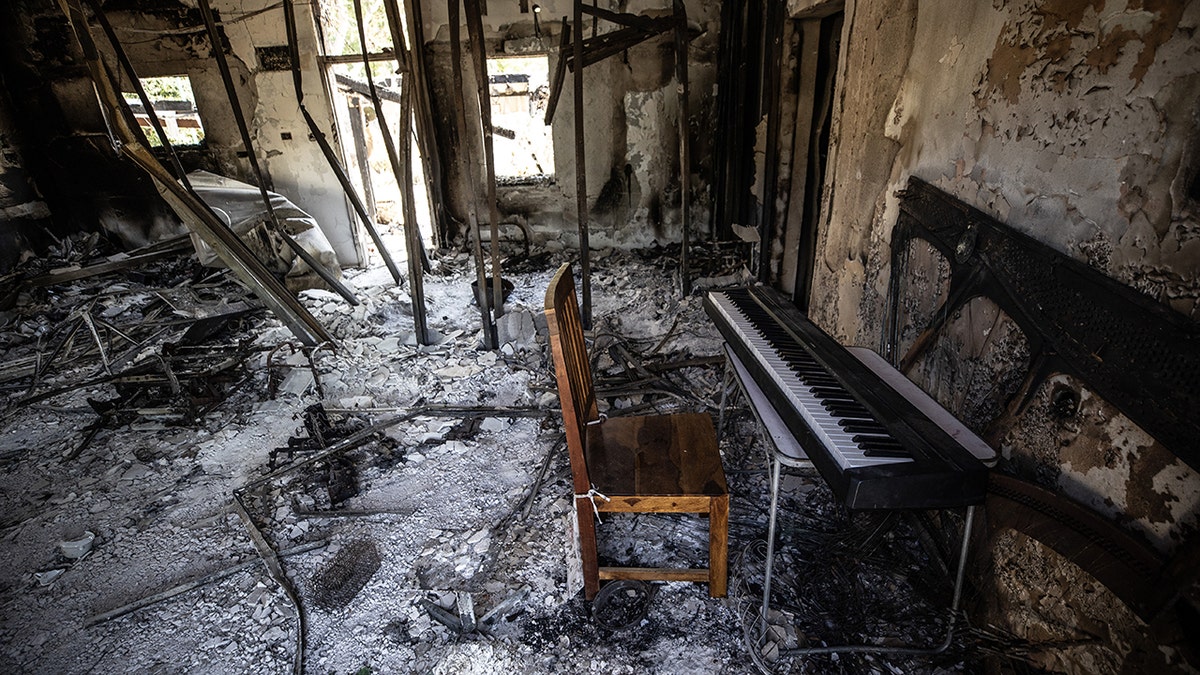


 Without question the two greatest kings of Israel were David and Solomon. The Bible is full of rich stories recounting these two remarkable lives.
Without question the two greatest kings of Israel were David and Solomon. The Bible is full of rich stories recounting these two remarkable lives. In 1994 archaeologists were digging in northern Israel at the ancient city of Dan. The area surrounding Dan is one of the most beautiful parts of Israel. The excavation had come across some interesting elements but nothing which would rock the archaeological world until a member of the team made an unlikely discovery.
In 1994 archaeologists were digging in northern Israel at the ancient city of Dan. The area surrounding Dan is one of the most beautiful parts of Israel. The excavation had come across some interesting elements but nothing which would rock the archaeological world until a member of the team made an unlikely discovery. This inscription is fascinating on many levels, but what makes it the #2 biblical discovery in archaeology is the way one of the kings is described. The Aramaean king refers to the kingdom of Judah by its dynastic name, a name frequently used in the Hebrew Bible as well: the House of David. This not only indicates that the family of David still sat on the throne of Jerusalem, but this inscription represents the oldest textual reference to the historical King David ever discovered!
This inscription is fascinating on many levels, but what makes it the #2 biblical discovery in archaeology is the way one of the kings is described. The Aramaean king refers to the kingdom of Judah by its dynastic name, a name frequently used in the Hebrew Bible as well: the House of David. This not only indicates that the family of David still sat on the throne of Jerusalem, but this inscription represents the oldest textual reference to the historical King David ever discovered!



:quality(85)//s3.amazonaws.com/arc-wordpress-client-uploads/infobae-wp/wp-content/uploads/2016/10/26171108/Netanyahu-1920-1.jpg)






















 How accurate is the Old Testament we hold in our hands? It’s popular today to attack the accuracy of the Bible on the grounds of its lack of effective transmission. Popular authors claim the Bible we have today has simply been copied too many times, with too many textual errors, to be believed as the very words of God handed down to us over the millennia.
How accurate is the Old Testament we hold in our hands? It’s popular today to attack the accuracy of the Bible on the grounds of its lack of effective transmission. Popular authors claim the Bible we have today has simply been copied too many times, with too many textual errors, to be believed as the very words of God handed down to us over the millennia. With all the careful scribal work a shockingly few number of Old Testament ancient manuscripts exist until today. The silver amulet scroll is by far the oldest. The scroll was mentioned as #4 in this top ten series. The amulet scroll dates way back to 600 BC. This is fantastic but it is only a couple verses of the entire Bible. So we can get a feel for the accuracy of those couple verses but not be able to get a good representative sample for the entirety of Scripture.
With all the careful scribal work a shockingly few number of Old Testament ancient manuscripts exist until today. The silver amulet scroll is by far the oldest. The scroll was mentioned as #4 in this top ten series. The amulet scroll dates way back to 600 BC. This is fantastic but it is only a couple verses of the entire Bible. So we can get a feel for the accuracy of those couple verses but not be able to get a good representative sample for the entirety of Scripture. Codex Aleppo is the oldest entire Old Testament possessed by humanity. The manuscript dates to around 900AD. The priceless manuscript is indeed magnificent. When analyzing the more than 2.7 million writing details that make up the Old Testament, the manuscript appears to be very precise in its creation. Although we have such a beautiful manuscript, the elephant in the room is that this manuscript dates from 900AD. Many New Testament manuscripts are older than our oldest Old Testament manuscript. Most of the Old Testament was written over 1500 years before Codex Aleppo.
Codex Aleppo is the oldest entire Old Testament possessed by humanity. The manuscript dates to around 900AD. The priceless manuscript is indeed magnificent. When analyzing the more than 2.7 million writing details that make up the Old Testament, the manuscript appears to be very precise in its creation. Although we have such a beautiful manuscript, the elephant in the room is that this manuscript dates from 900AD. Many New Testament manuscripts are older than our oldest Old Testament manuscript. Most of the Old Testament was written over 1500 years before Codex Aleppo. The greatest biblically relevant archaeological discovery, made in the winter of 1946-47, would shake up the biblical and archaeological world. John C. Trever has done a good job reconstructing the story of the scrolls from several interviews with the Bedouin people.
The greatest biblically relevant archaeological discovery, made in the winter of 1946-47, would shake up the biblical and archaeological world. John C. Trever has done a good job reconstructing the story of the scrolls from several interviews with the Bedouin people. The scrolls were first taken to a dealer named Ibrahim ‘ljha in Bethlehem. In one of those famous dumb moments of history ‘ljha returned them saying they were worthless. Undaunted, thankfully, the Bedouin went to a nearby market, where a Syrian Christian offered to buy them. A sheikh joined their conversation and suggested they take the scrolls to a part-time antiques dealer. The Bedouin left one scroll with the dealer and then sold three scrolls to another for the ridiculous sum of $29!
The scrolls were first taken to a dealer named Ibrahim ‘ljha in Bethlehem. In one of those famous dumb moments of history ‘ljha returned them saying they were worthless. Undaunted, thankfully, the Bedouin went to a nearby market, where a Syrian Christian offered to buy them. A sheikh joined their conversation and suggested they take the scrolls to a part-time antiques dealer. The Bedouin left one scroll with the dealer and then sold three scrolls to another for the ridiculous sum of $29! After examining the scrolls and suspecting their astronomical worth, he expressed interest in purchasing them. Four scrolls found their way into his hands. More scrolls continued to arrive on the scene. By the end of 1948, nearly two years after their first discovery, scholars had yet to locate the source of the manuscripts.
After examining the scrolls and suspecting their astronomical worth, he expressed interest in purchasing them. Four scrolls found their way into his hands. More scrolls continued to arrive on the scene. By the end of 1948, nearly two years after their first discovery, scholars had yet to locate the source of the manuscripts. Archaeologists were able to track down the origin of the first scrolls and together with the Bedouins ended up finding a total of 972 manuscripts from 11 different caves. All 11 caves are in the southeastern Dead Sea area of Israel. The area receives almost no rainfall making it a perfect climate for ancient manuscripts to last thousands of years without decomposing.
Archaeologists were able to track down the origin of the first scrolls and together with the Bedouins ended up finding a total of 972 manuscripts from 11 different caves. All 11 caves are in the southeastern Dead Sea area of Israel. The area receives almost no rainfall making it a perfect climate for ancient manuscripts to last thousands of years without decomposing. The scrolls, for some insane reason, were put up for sale in the Wall Street Journal on June 1, 1954. They were purchased for $250,000 and brought to Jerusalem where they eventually became housed in a museum called the Shrine of the Book where they reside today when not circulating in museums around the world. The scrolls today are considered priceless. Just to purchase a replica facsimile copy of 3 of the scrolls currently will run you $60,000 (a donation of replica scrolls to Parchment & Pen will not be turned down).
The scrolls, for some insane reason, were put up for sale in the Wall Street Journal on June 1, 1954. They were purchased for $250,000 and brought to Jerusalem where they eventually became housed in a museum called the Shrine of the Book where they reside today when not circulating in museums around the world. The scrolls today are considered priceless. Just to purchase a replica facsimile copy of 3 of the scrolls currently will run you $60,000 (a donation of replica scrolls to Parchment & Pen will not be turned down). The scrolls are still, after decades, a discovery still being digested. The 972 manuscripts have shed great light on the accuracy and complexity of the Old Testament. The Isaiah Scroll, in comparison to Codex Aleppo and other manuscripts, show that the message of the Old Testament has not been changed over millennia. More articles and books have been written about the Dead Sea Scrolls than any other archaeological discovery with biblical significance. The scrolls are shedding a great deal of light on the Jewish religious world of roughly 200BC-90AD. The scrolls are generally showing the modern-day Old Testament to be an extremely accurate representation of the original writers.
The scrolls are still, after decades, a discovery still being digested. The 972 manuscripts have shed great light on the accuracy and complexity of the Old Testament. The Isaiah Scroll, in comparison to Codex Aleppo and other manuscripts, show that the message of the Old Testament has not been changed over millennia. More articles and books have been written about the Dead Sea Scrolls than any other archaeological discovery with biblical significance. The scrolls are shedding a great deal of light on the Jewish religious world of roughly 200BC-90AD. The scrolls are generally showing the modern-day Old Testament to be an extremely accurate representation of the original writers. Google has announced a new deal with the Israeli Antiquities Authority to photograph all of the scrolls in order to make high-resolution photos available to anyone online for free. The scrolls continue to amaze and delight us; where we once had only a couple fragments of the ancient Old Testament we now enjoy an abundant library.
Google has announced a new deal with the Israeli Antiquities Authority to photograph all of the scrolls in order to make high-resolution photos available to anyone online for free. The scrolls continue to amaze and delight us; where we once had only a couple fragments of the ancient Old Testament we now enjoy an abundant library.

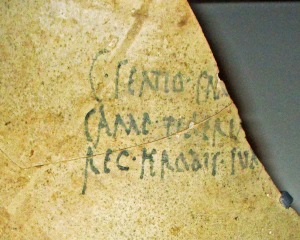




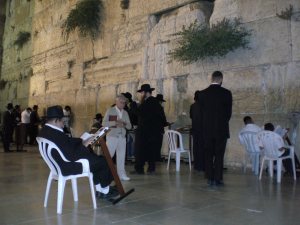
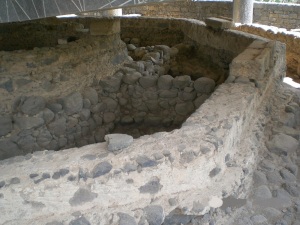
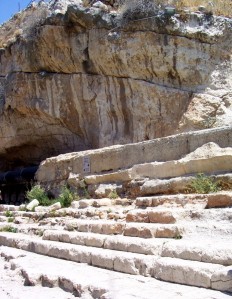
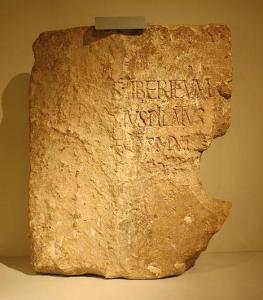
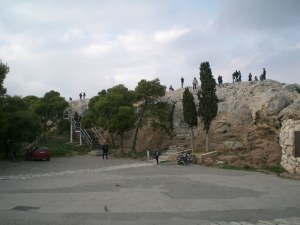
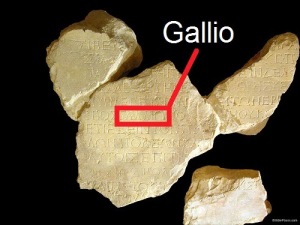
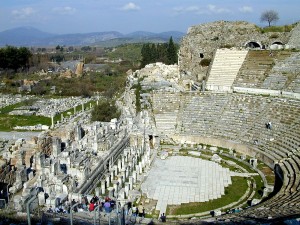

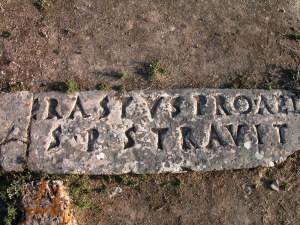

 1967 was an active year. The Doors kicked off the year releasing their self-entitled debut album. The United States was fully involved in the Vietnam War. The Green Bay Packers won their third consecutive championship against the Dallas Cowboys in the frozen “Ice Bowl.” In 1967 NASA had a lunar orbiter circling the moon taking photos of the surface looking for the best place to take that famous, “One small step for man, one giant leap for mankind.”
1967 was an active year. The Doors kicked off the year releasing their self-entitled debut album. The United States was fully involved in the Vietnam War. The Green Bay Packers won their third consecutive championship against the Dallas Cowboys in the frozen “Ice Bowl.” In 1967 NASA had a lunar orbiter circling the moon taking photos of the surface looking for the best place to take that famous, “One small step for man, one giant leap for mankind.” The Jerusalem Peace Forest, which was planted at the edge of the desert, offers its visitors a unique spectacle created by the natural contrast of green trees surrounded by a barren landscape. Unknown to those in 1967 a marvelous archaeological discovery just happened to lay underneath the Jerusalem Peace Forest. The discovery we will focus on today would never have happened without the six day war in 1967. The discovery would have never happened without the creation of the Peace Forest.
The Jerusalem Peace Forest, which was planted at the edge of the desert, offers its visitors a unique spectacle created by the natural contrast of green trees surrounded by a barren landscape. Unknown to those in 1967 a marvelous archaeological discovery just happened to lay underneath the Jerusalem Peace Forest. The discovery we will focus on today would never have happened without the six day war in 1967. The discovery would have never happened without the creation of the Peace Forest. The archaeologists have just stepped back in time more than 2,000 years. As the flashlights sweep the tomb several ossuaries are found. An ossuary is a surprisingly small burial box. When looking at an ossuary you think there’s no chance a body could fit inside the box. That’s not the point. The ossuary is only used to store the bones after the body has decomposed.
The archaeologists have just stepped back in time more than 2,000 years. As the flashlights sweep the tomb several ossuaries are found. An ossuary is a surprisingly small burial box. When looking at an ossuary you think there’s no chance a body could fit inside the box. That’s not the point. The ossuary is only used to store the bones after the body has decomposed. On the outside of the ossuary is found an inscription in Aramaic dramatically increasing the value of the ossuary and importance of this piece to the world of archaeology. In Aramaic the inscription reads, “Joseph son of Caiaphas.” Another ossuary, additionally, is found in the tomb containing an inscription reading simply, “Caiaphas.” The first ossuary draws the most attention.
On the outside of the ossuary is found an inscription in Aramaic dramatically increasing the value of the ossuary and importance of this piece to the world of archaeology. In Aramaic the inscription reads, “Joseph son of Caiaphas.” Another ossuary, additionally, is found in the tomb containing an inscription reading simply, “Caiaphas.” The first ossuary draws the most attention.

 In 1846 archaeologist Henry Layard led a dig of a site in modern day Iraq named Kalhu. Layard, who also discovered #10 on our list, was fast becoming one of the world’s leading experts on the ancient Assyrians. Kalhu was once the capital of the ancient Assyrian Empire. Assyria was the leading world-power for a few hundred years (roughly 900-650BC). Many of the people and events in the Old Testament took place during this time of history.
In 1846 archaeologist Henry Layard led a dig of a site in modern day Iraq named Kalhu. Layard, who also discovered #10 on our list, was fast becoming one of the world’s leading experts on the ancient Assyrians. Kalhu was once the capital of the ancient Assyrian Empire. Assyria was the leading world-power for a few hundred years (roughly 900-650BC). Many of the people and events in the Old Testament took place during this time of history. You’ve probably never heard of King Shalmaneser III. He ruled Assyria from 859-824 BC. His long reign of 35 years consisted of constant military campaigns against eastern tribes such as the Babylonians, the nations Mesopotamia, Syria, etc…
You’ve probably never heard of King Shalmaneser III. He ruled Assyria from 859-824 BC. His long reign of 35 years consisted of constant military campaigns against eastern tribes such as the Babylonians, the nations Mesopotamia, Syria, etc… Shalmaneser loses the battle but is determined to win the overall war.
Shalmaneser loses the battle but is determined to win the overall war. As Henry Layard’s team, in 1846, excavated the sandy world of Kahu they encountered a large black object taking them quickly back to the time of Shalmaneser III, Ahab and Jehu. The large black object is known as an obelisk. The word obelisk simply refers to the shape of the object. 21st century Americans are most familiar with a white obelisk known as the Washington monument. This black obelisk is not as big as the Washington monument, it’s only 6 feet tall, but for an archaeological find in the middle of a desert…a black carved object 6 feet tall is a substantial discovery.
As Henry Layard’s team, in 1846, excavated the sandy world of Kahu they encountered a large black object taking them quickly back to the time of Shalmaneser III, Ahab and Jehu. The large black object is known as an obelisk. The word obelisk simply refers to the shape of the object. 21st century Americans are most familiar with a white obelisk known as the Washington monument. This black obelisk is not as big as the Washington monument, it’s only 6 feet tall, but for an archaeological find in the middle of a desert…a black carved object 6 feet tall is a substantial discovery.
